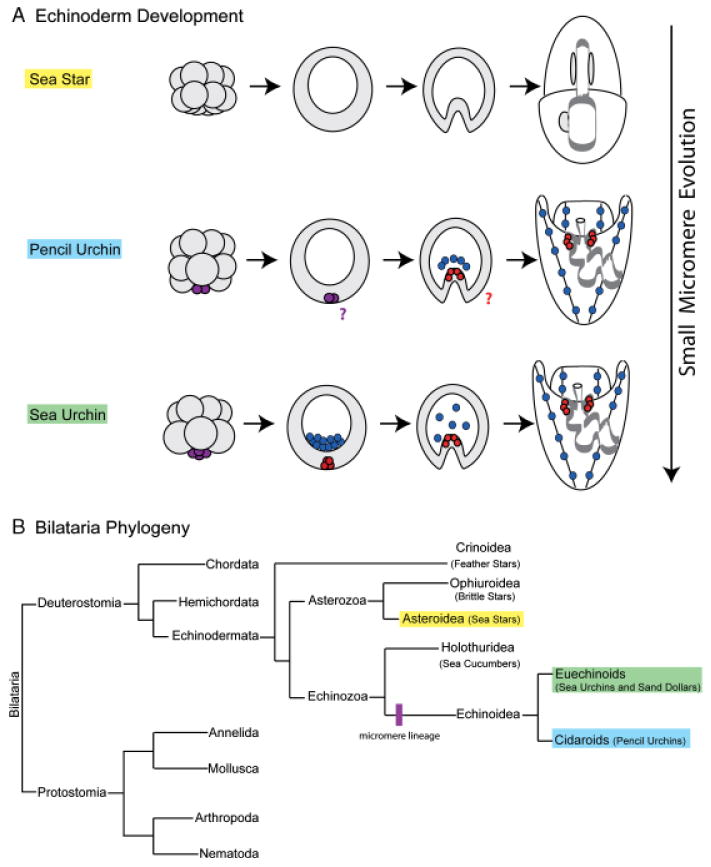Fig. 1.

Echinoderm phylogeny and small micromere evolution. (A) Micromeres are a derived feature among echinoderms. The sea star embryo exhibits equal early cleavage divisions and therefore does not have a micromere lineage. The pencil urchin embryo has a variable number of micromeres (purple) that will give rise to the larval skeleton (blue); however, it is unclear whether the micromeres go through a second asymmetric division to give rise to small micromeres. In the sea urchin embryo, four micromeres (purple) asymmetrically divide to give rise to four large micromeres (blue) and four small micromeres (red). Large micromeres give rise to the larval skeleton. Small micromeres reside at the vegetal plate of the blastula, travel at the tip of archenteron in the gastrula, and divide only once before being incorporated into the left and right coelomic pouches of the larva. (B) Members of the phylum Echinodermata are a sister-group to the chordates. There are five extant classes of echinoderms: Crinoidea (feather stars), Ophiuroidea (brittle stars), Asteroidea (sea stars), Holothuridea (sea cucumbers), and Echinoidea. Members of the class Echinoidea, which have a micromere lineage, are split into the subclasses Euechinoids (sea urchins and sand dollars) and Cidaroids (pencil urchins) (Ettensohn et al. 2004).
